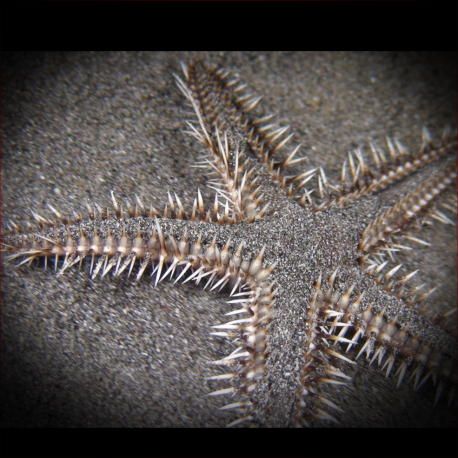More info
Datasheet
| Maximum Size | 30.5cm / 12.01inches |
| Reef Compatible | Yes |
| Temperament | Peaceful |
| Care Description | Easy |
| Specific Gravity | 1.023-1.025 |
| Carbonate Hardness | 8-12 |
| pH | 8.1-8.4 |
General Description
The Sand Sifting Sea Star, scientifically known as Astropecten polycanthus, showcases a subtle yet captivating appearance with its alternating bands of brown and beige adorning its thick, spine-covered arms. Belonging to the Astropectinidae family, this nocturnally active invertebrate adeptly sifts through sand to unearth detritus and leftover food in aquarium settings.
Aquarium Suitability and Demands
Considered easy to care for, the Sand Sifting Sea Star proves to be an ideal choice for marine invertebrate enthusiasts, particularly beginners. Its peaceful temperament and efficient detritus-cleaning habits make it a valuable addition to home aquariums.
Care and Hardiness
Requiring a consistent environment, the Sand Sifting Sea Star is intolerant of abrupt changes in oxygen levels, salinity, and pH. Avoid exposing it to copper-based medications and ensure stable water conditions within the parameters of KH 8-12, pH 8.1-8.4, and SG 1.023-1.025 to sustain its well-being.
Reef Suitability
With its reef-compatible nature, this omnivorous sea star thrives in reef aquariums, contributing to the ecosystem by aiding in detritus removal and enhancing overall cleanliness.
Aquarium Setup
To support its feeding behavior, house the Sand Sifting Sea Star in aquariums with deep sand substrates of a few inches in depth. Avoid cohabiting it with natural predators like Puffers due to its slower mobility. Utilize the drip acclimation method when introducing new specimens and handle them carefully without exposing them to air to ensure successful acclimatization.
Behaviour
Known for its peaceful demeanor, this sea star efficiently scavenges for food within the substrate, participating in nighttime foraging activities to maintain a clean aquarium environment.
Feeding and Diet
As an omnivore, the Sand Sifting Sea Star should receive a varied diet comprising natural food sources, especially in well-established marine setups. Regular feeding is crucial to prevent starvation, which may lead to decay if the sea star depletes its food source.
Dimorphism (and captive reproduction If covered)
Distinguishing between male and female Sand Sifting Sea Stars is challenging, making breeding in home aquariums an intricate endeavor with no clear characteristics to aid in differentiation.
Habitat and Distribution
Native to marine environments, the Sand Sifting Sea Star inhabits sand substrates across its distribution range. Its natural habitat includes areas where detritus and small invertebrates serve as primary food sources for sustaining its omnivorous diet.

